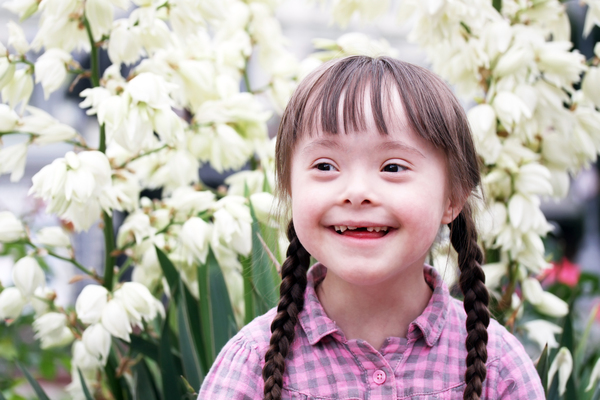Blog
Down Syndrome
Down syndrome, also known as Trisomy 21, is caused by an extra whole number chromosome 21, resulting in 47, rather than the normal 46 chromosomes. According to the Centers for Disease Control and Prevention, approximately one in every 700 babies in the United States is born with Down syndrome, making Down syndrome the most common chromosomal condition. About 6,000 babies with Down syndrome are born in the United States each year. The cause of the extra chromosome is unknown. Maternal age is the only factor that has been linked to an increased chance of having a baby with Down syndrome. However, due to higher birth rates in younger women, 80% of children with Down syndrome are born to women under 35 years of age. There is no definitive scientific research that indicates that Down syndrome is caused by environmental factors or the parents’ activities before or during pregnancy.
Physical characteristics include generalized hypotonia, a flat facial profile, small ears, nose, and chin, and brachycephaly (flattened back of the head). Other physical characteristics include mid-face dysplasia (malformation of the mid-face), shortened oral and pharyngeal structures, a narrow and high arched palate, a relatively large and fissured tongue that tends to protrude, a short neck with excess skin on the back of it, hyperflexible joints, cardiac malformations (in approximately 40% of cases), and short fingers. Vision problems are also commonly presented by children with Down Syndrome, including the following: strabismus (cross-eyed), near- or farsightedness, and an increased risk of cataracts.
Communication problems include conductive loss in many cases and sensorineural loss in some. There may be language delays and disorders, especially deficient syntactic and morphological features accompanied by relatively better vocabulary skills. Hypernasality and nasal emission, breathier voice, and articulation disorders may also be present. Along with the treatment of an ENT, speech therapy will also be beneficial in improving communication deficits for children diagnosed with Down Syndrome.
Some children with Down Syndrome demonstrate no significant health problems, others may experience multiple co-occuring medical conditions. For example, almost half of all children born with Down Syndrome have a congenital heart defect. Children with Down syndrome are at an increased risk of developing pulmonary hypertension, a serious condition that can lead to irreversible damage to the lungs.

Gabrielle Cormace MS CF SLP
Resources:
Gavin, M. L. (2015, September). Down Syndrome. Retrieved from KidsHealth : http://kidshealth.org/en/parents/down-syndrome.html#
Roseberry-McKibbin, C., & Hegde, M. (2016). An Advanced Review of Speech-Language Pathology. Austin, TX: Pro-ed.
National Down Syndrome Society. (n.d.). What Is Down Syndrome? . Retrieved from National Down Syndrome Society: http://www.ndss.org/Down-Syndrome/What-Is-Down-Syndrome/




